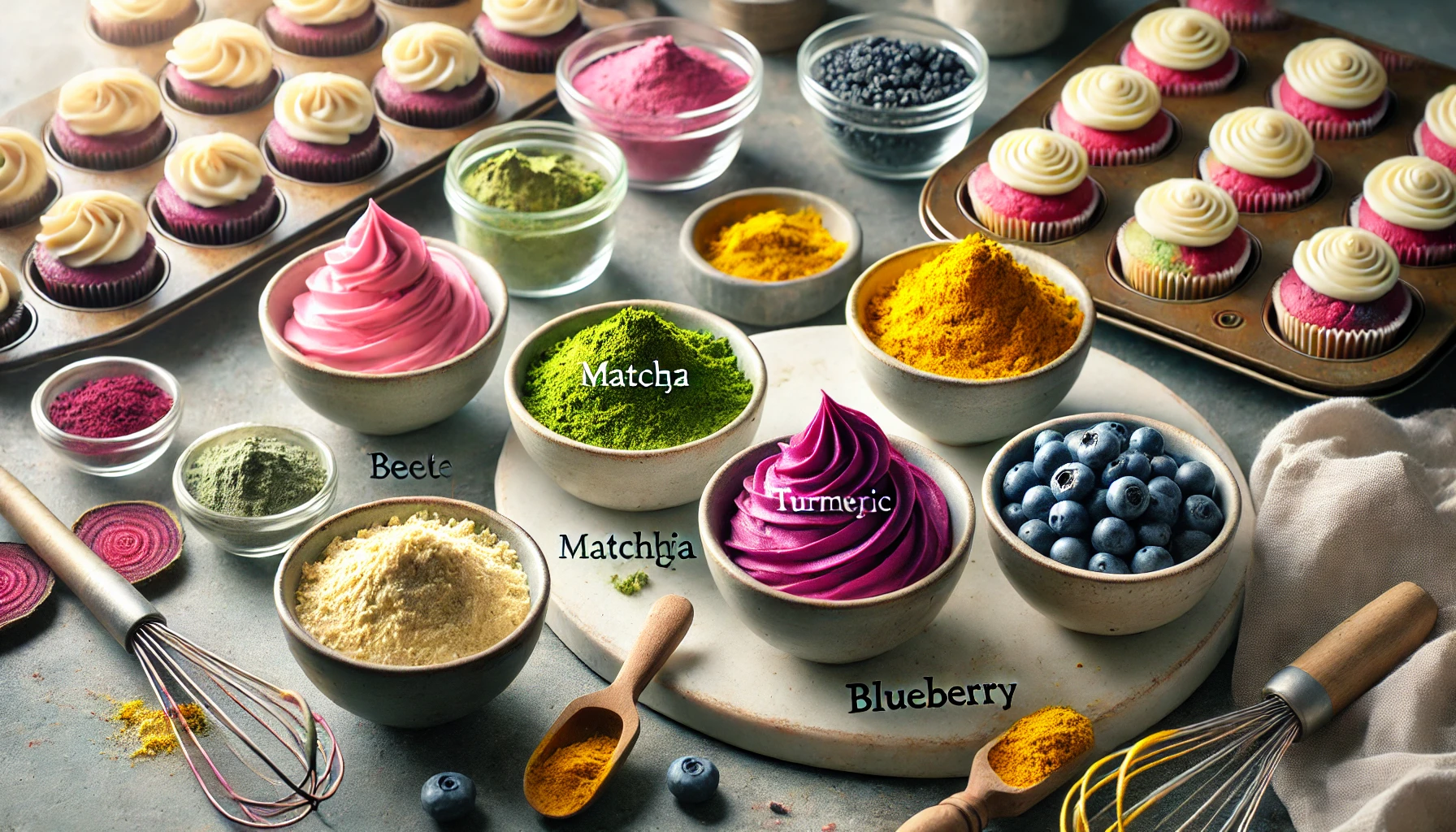Want to make your desserts colorful, eye-catching, and still natural? You don’t need synthetic food coloring to make beautiful cakes, cookies, or frostings. Nature provides a vibrant palette — from earthy reds to sunny yellows and deep purples — all using plants, fruits, and spices.
In this article, you’ll learn how to naturally color doughs and frostings, what ingredients to use, how to prepare them, and when each one works best.
Why Choose Natural Coloring?
- No artificial chemicals or additives
- Perfect for kids, people with sensitivities, or clean-eating recipes
- Adds subtle flavor and aroma
- Gives your desserts a homemade, organic look
Natural coloring may be softer or more pastel than synthetic dyes, but the results are beautiful and authentic.
Best Natural Ingredients for Coloring
Here are some of the most effective and commonly used natural options:
| Color | Ingredient | Works Best In |
|---|---|---|
| Pink / Red | Beet juice, raspberry powder | Buttercream, icing, cookie dough |
| Purple | Blueberries, red cabbage | Frosting, glaze |
| Green | Matcha powder, spinach puree | Doughs, buttercream |
| Yellow | Turmeric, saffron, mango | Frosting, cake batter |
| Orange | Carrot juice, sweet potato | Cookies, glazes |
| Blue | Butterfly pea flower, red cabbage (pH shift) | Frosting, whipped cream |
| Brown | Cocoa powder, coffee | All types of doughs and creams |
How to Prepare Natural Colorings
1. Fruit or Veggie Juice / Puree
How to use:
- Juice beets, carrots, or spinach — or use a fine puree
- Strain to remove solids
- Add to your base a little at a time
Great for:
- Icing, glazes, light-colored batters
💡 Beet juice creates a vibrant pink or deep red, depending on amount used.
2. Powders
These are easy to measure, potent, and store well.
Examples:
- Spirulina (green)
- Beetroot powder (pink)
- Turmeric (yellow)
- Blueberry powder (purple)
How to use:
- Mix directly into frosting or dry dough
- Start with 1/2 teaspoon and adjust
3. Tea and Infusions
Steep tea leaves or flowers, then reduce the liquid for color.
Best options:
- Matcha (vibrant green)
- Hibiscus (deep pink/purple)
- Butterfly pea flower (blue)
Use in:
Frosting, meringues, whipped cream
4. Spices
Spices are highly pigmented and often add aroma.
Examples:
- Turmeric (bright yellow, earthy taste)
- Paprika (orange hue, subtle warmth)
- Saffron (golden yellow, floral notes)
Use sparingly to avoid overpowering the dessert flavor.
Tips for Coloring Doughs and Frostings Naturally
🌈 Start Light
Natural colors are more pastel than artificial dyes. Add in small amounts and build gradually.
🍰 Use a White Base
Color shows up better on white bases like buttercream, white cake, or sugar cookies.
❄️ Color May Fade with Heat
Some natural dyes (like spinach or blueberry) fade when baked. Use them in no-bake or post-bake recipes for best vibrancy.
🧊 Store Extras in the Fridge
Purees and infusions should be used fresh, but you can freeze extra in ice cube trays for future use.
How Much to Use?
Start small:
- 1/2 tsp powder or 1 tsp juice/puree per cup of frosting or batter
- Adjust as needed, remembering that color may deepen after resting
Too much can affect flavor or texture — especially with watery ingredients.
Example: Naturally Colored Vanilla Frosting
Ingredients:
- 1 cup butter
- 3–4 cups powdered sugar
- 2 tbsp milk or cream
- 1 tsp vanilla
- Natural color of your choice
Method:
- Beat butter until creamy.
- Add sugar and vanilla.
- Add milk and beat until fluffy.
- Stir in your natural color until desired tone is reached.
Perfect for cupcakes, cookies, or layering cakes!
Final Thought: Brighten Your Bakes Naturally
With just a few pantry or produce items, you can add natural color to your desserts — no lab-made dyes required. From beet-pink cookies to matcha-green frosting and turmeric-golden glazes, the possibilities are both delicious and beautiful.
Try a few options, experiment with your favorites, and let your creativity (and nature) do the decorating 🌿🌈
